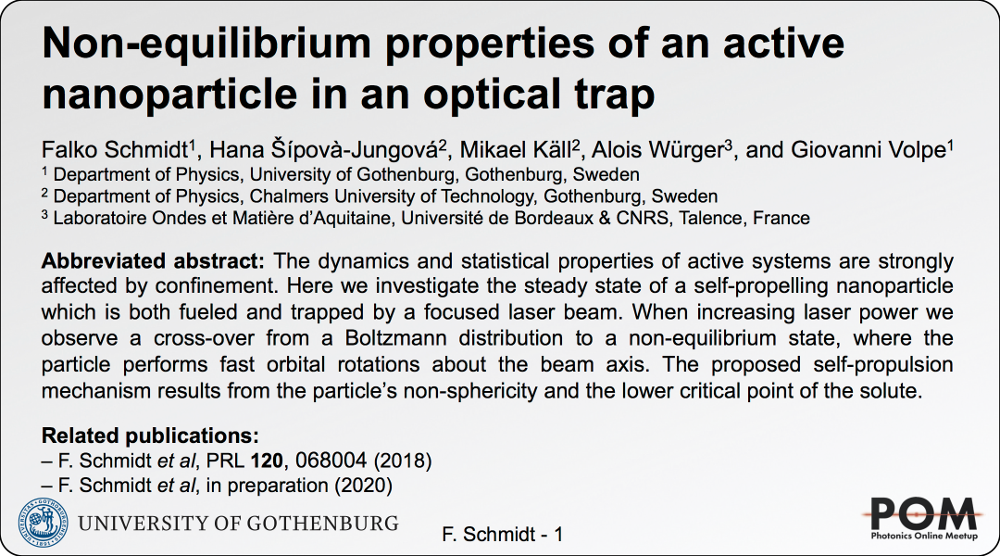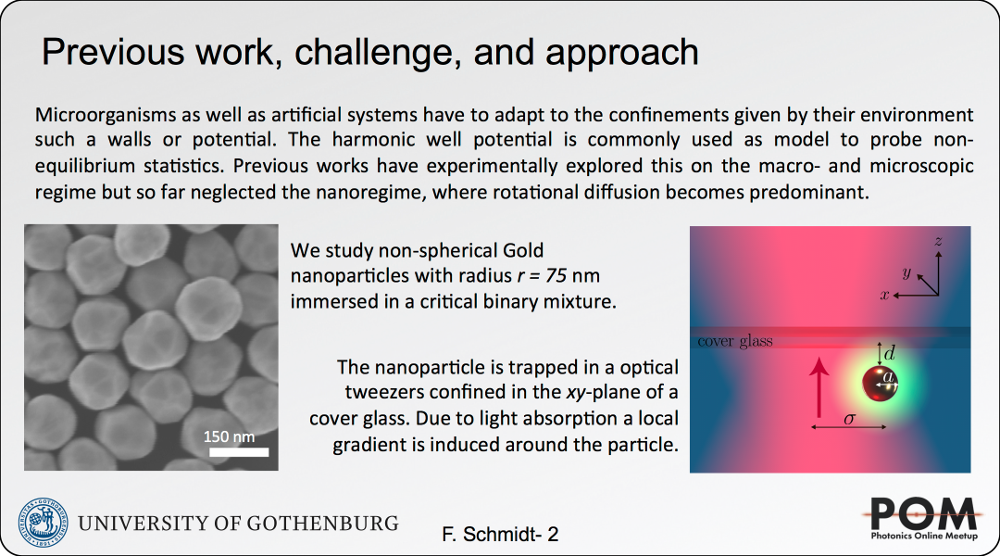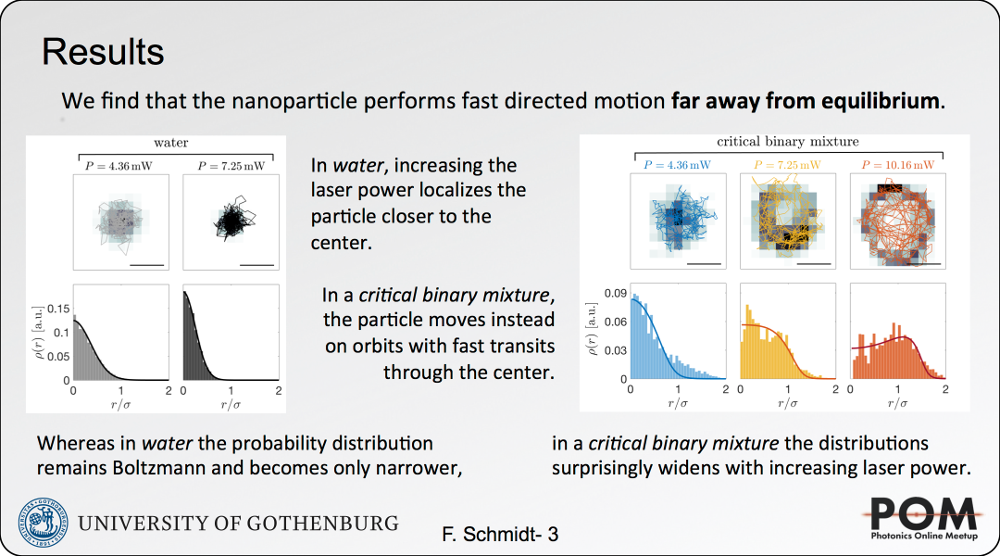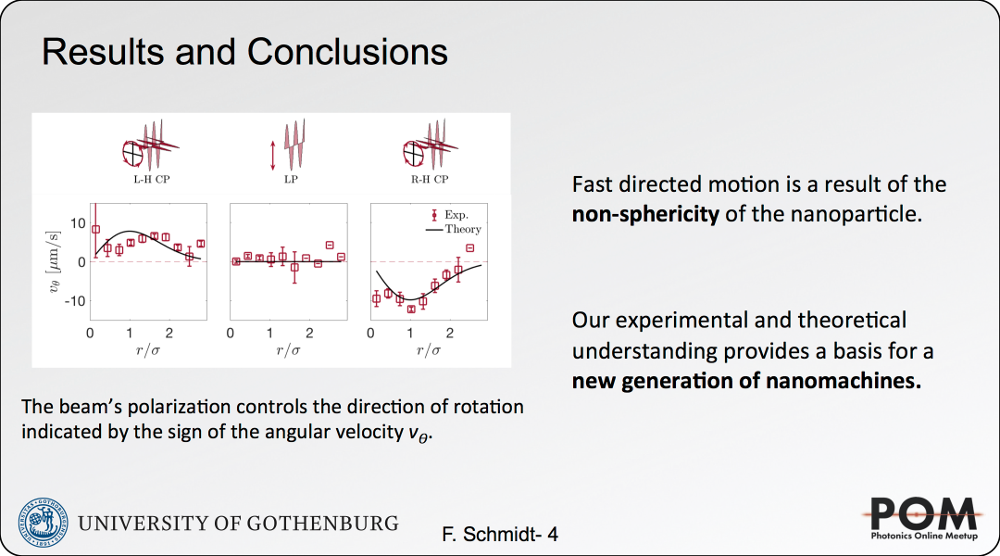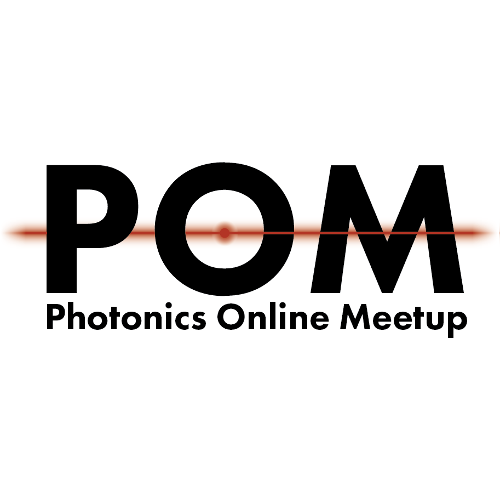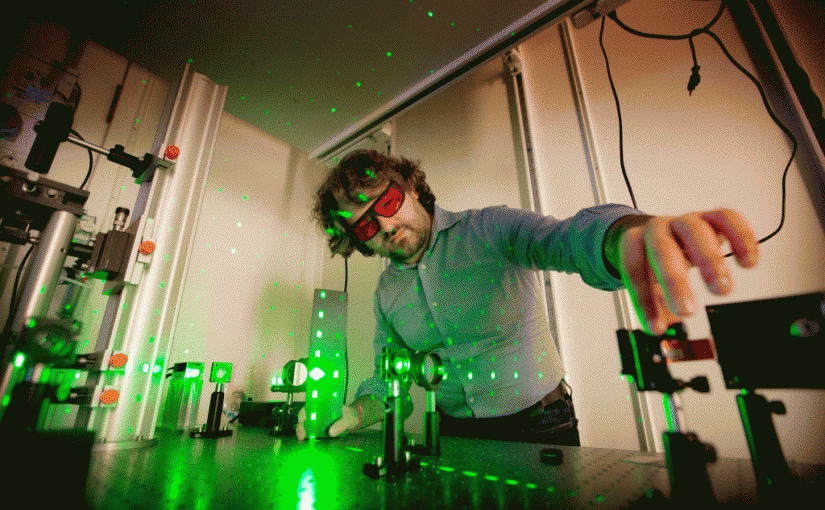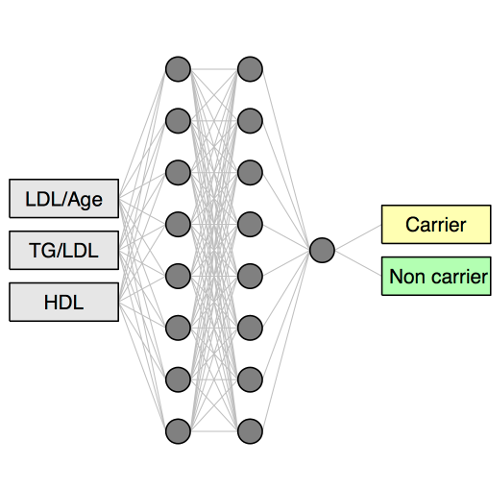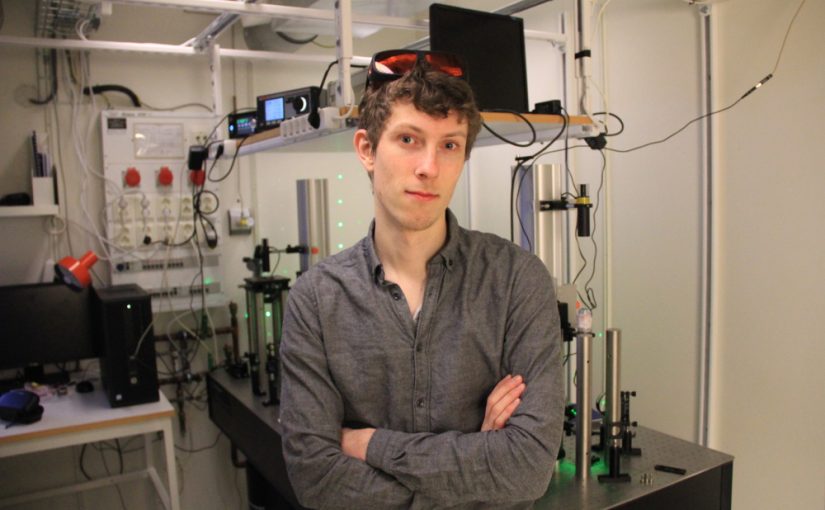Dynamics of an active nanoparticle in an optical trap
Falko Schmidt, Hana Šípová-Jungová, Mikael Käll, Alois Würger, Giovanni Volpe
Click here to see the slides.
Twitter Link: here.
Active matter systems in non-equilibrium conditions have recently gained great interest from many disciplines such as micro and nanomachines and in living organisms. Probing the dynamics of active Brownian particles (ABPs) under confinement such as found in biological systems gives insight into their non-equilibrium processes. Although previous studies [1-4] have shown the effect of confinement on ABPs on the microscale and macroscale investigating dynamics on the nanoscale remains challenging where thermal fluctuations typically prevail. Here, we are investigating experimentally and theoretically a nanoscopic particle in the harmonic potential of an optical trap and driven away from equilibrium by self-induced concentration gradients. We find that a nanoparticle performs fast orbital rotation at finite distance from the trap center and its probability density shifts from a Gaussian to a skewed distribution. Furthermore, we show that by transfer of spin angular momentum from the trapping beam the direction of the particle’s rotation can be controlled. We develop a theoretical model of this system which reveals that the driving mechanism of such fast rotation is the particle’s non-sphericity providing insight for the development of future nanoscopic engines.
References
[1] S. C. Takatori et al., Nat. Comm., 7, 10694 (2016)
[2] O. Dauchot & V. Démery, Phys. Rev. Lett., 122, 068002 (2019)
[3] A. Pototsky & H. Stark, EPL, 98, 5004 (2012)
[4] F. Schmidt et al., Phys. Rev. Lett., 120, 068004 (2018)
Poster Session
Time: June 22nd 2020
Place: Twitter
POM Conference
Link: POM
Time: June 25th 2020
Place: Online
